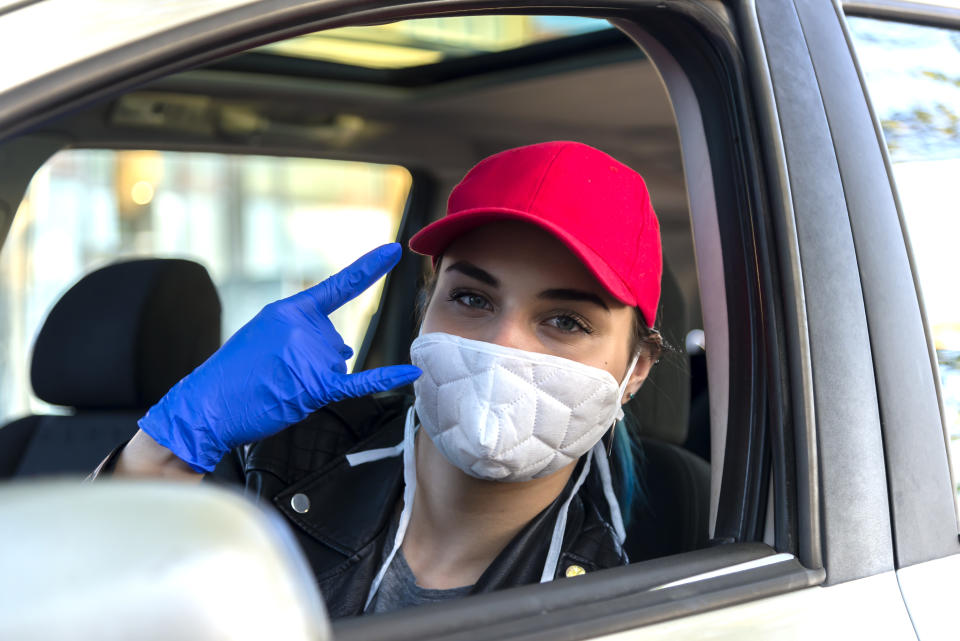Coronavirus: How to take care of your car during a pandemic
Stay-at-home and shelter-in-place mandates to slow the spread of the coronavirus pandemic have upended life for an extended period. With nowhere to go, certain chores like auto maintenance may have fallen by the wayside.
Despite hampered mobility, now’s not the time to neglect your wheels. It might not seem like it, but a parked car still requires care and attention. Even going for a spin every now and again helps.
“It's not quite as simple as just going around the block, but you can avoid some problems by driving your car,” Greg Brannon, an AAA spokesperson told Cashay. “Really what you need to do to ensure that your car stays in good operating condition is to get it out, drive, and get it up to operating temperature.”
How often you should drive it depends on where you live. Car owners in colder climates should commit to driving for 30 minutes once a week, while those in warmer climates can go out every other week, Brannon said.

That applies to every car you drive. For multi-car households, Brannon stressed the importance of alternating which vehicle you drive when you go out.
“Particularly where you have more than one car in the household is going to be important to rotate them and ensure that both are getting exercised during this time,” he said.
Cashay reached out to AAA for more guidance for motorists who are driving less and how to care for their idly parked vehicles, while avoiding the potentially costly result that comes from neglect.
Tires
Inspect all four tires (and don’t forget the spare) and check the tread depth with a quarter. If Washington’s head is visible, it’s time for a replacement.
When a car sits in one position for an extended period of time, the place where the tire meets the ground becomes rigid. To prevent flat spots from forming, add 10 psi of pressure to each tire.
Breaks
Release the parking brake when storing your wheels to prevent the break from possibly freezing or rusting the brake pads. If you drive an automatic transmission, simply place the vehicle in park. For your manual transmission ride, put it in first or reverse gear and use wheel chocks to help hold your vehicle in place.
Windshield and fluids
Prop up the windshield wiper arms so the blades are off the windshield to avoid them sticking to the glass.
Check fluid levels (i.e. oil, brake fluid, automatic transmission fluid, power steering fluid, and windshield wiper fluid) and consult your owner’s manual for specifics on how to do this for individual vehicles.
Battery
A quick pop of the hood and you’ll find your car battery. Ensure that your battery is clean and free from debris, and the battery cables are tight.
Attach a battery tender to the battery, which will keep the battery at the proper state of charge. Make sure to remove before driving. Drive your vehicle once a week to ensure the battery stays properly charged.
Gasoline
For an idle car with gas in its tank — particularly for gas that contains ethanol — AAA recommends using STA-BIL, a fuel stabilizer. You don’t need to pay for a mechanic’s expertise for installation— it’s as simple as fueling up a vehicle. Fill up your gas tank and then drive for five to ten miles to ensure that the stabilized fuel circulates throughout the fuel system.

Brannon is also a proponent of keeping a full gas tank only when you’re taking your vehicle for routine drives.
“If you keep your tank topped off and you ensure that you circulate some gas through the system every couple of weeks, you're gonna go a long way to avoiding problems with where you're going to have gas sitting for too long,” he said.
Documentation and insurance
Just because you aren’t driving doesn’t mean you should allow your license to expire. If your license is about to expire, research your state’s DMV and read up on protocols or extensions put into place during COVID-19.
Canceling your auto insurance for a car you’re not driving might seem like an easy way to cut your monthly expenses, but AAA warns against it. You’ll save money but no one will be able to drive the vehicle and it won’t be covered against non-driving accidents like theft, fire, or vandalism.
AAA suggests to keep your policy current and contact your insurer if you’re having financial difficulties. Many auto insurers are offering credits, refunds, or rebates on premiums, since many customers are driving fewer miles than before. Contact your insurer for more information.
Stephanie is a reporter for Yahoo Money and Cashay, a new personal finance website. Follow her on Twitter @SJAsymkos.
Read more information and tips in our Cars section





